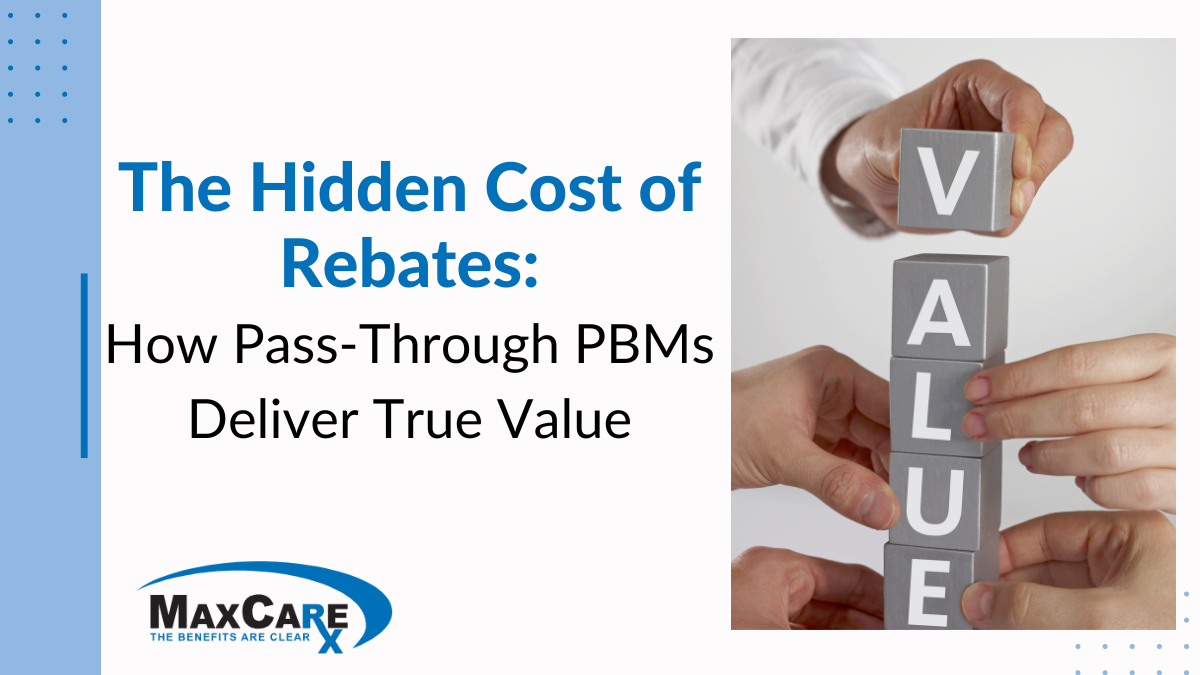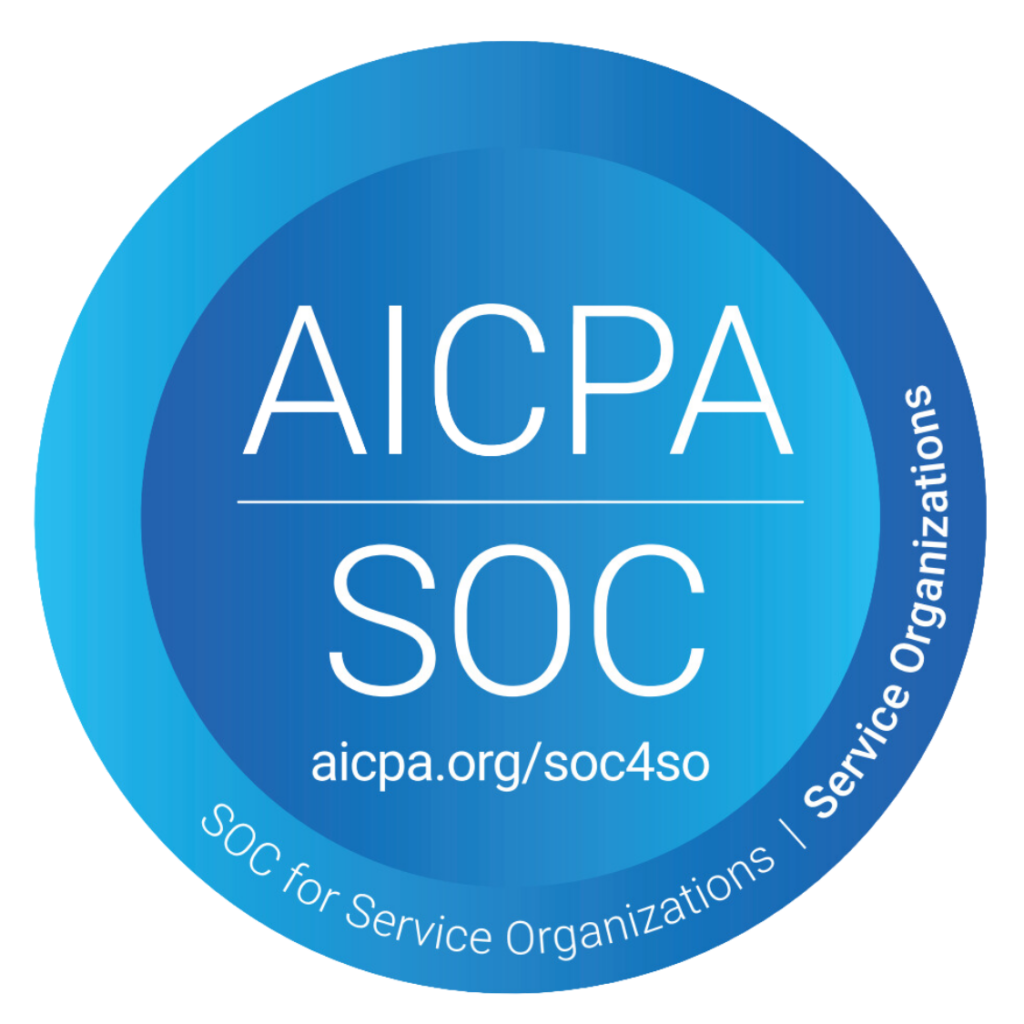Rebates have become a focal point in discussions about pharmacy benefit management, with many seeing them as a straightforward way to achieve savings. However, this perspective overlooks the potential hidden costs and inherent conflicts of interest within rebate-driven PBMs. The allure of higher rebates can sometimes mask the reality that a plan might end up with higher overall costs, as the focus shifts from achieving the best overall value to simply garnering the most rebates.
We’re here to explore how chasing rebates can unexpectedly increase costs and compromise financial efficiency in healthcare plans. By comparing traditional PBM practices with the clear, cost-effective strategies of pass-through PBMs, we aim to show how the latter are transforming the way savings and healthcare effectiveness are achieved.
The Hidden Costs and Conflicts of Interest
The inherent conflict arises when PBMs, driven by profit margins, might prioritize medications that yield higher rebates rather than those that might be the most cost-effective for patients. This practice doesn’t just muddy the waters of ethical pharmaceutical management; it fundamentally alters the trajectory of patient care by potentially favoring higher-cost medications over more affordable, equally effective alternatives. The ripple effect of such a choice can be profoundly adverse, influencing not only the immediate cost implications but also affecting long-term health outcomes and overall plan sustainability.
Financial Incentives vs. Patient Welfare
The Impact of Rebate Retention
Rebate retention as a revenue model for PBMs creates a conflict between earning profits and serving the health interests of patients. When PBMs choose to support medications that generate higher rebates rather than those that may be effective or have a lower overall cost for patients and plans, it raises ethical questions. This focus on financial returns can influence prescription trends, guiding them towards more expensive medications when lower-cost, equally effective options are available. The financial model based on rebates thus can misalign incentives, where the health plan’s expenditures and patient health outcomes are not the primary focus.
Skewing Prescription Trends
The natural consequence of these skewed incentives is the potential misdirection of prescription practices. This misalignment can result in patients receiving medications that, while still effective, may not be the optimal choice from a financial standpoint for the health plan. It introduces the risk of prioritizing profit, a situation where the most financially beneficial drugs are preferred over those that offer the best balance of cost-efficiency for the plan and its members.
Underutilization of Clinical Programs
Another significant hidden cost comes in the shape of underutilized clinical programs. Programs like step therapy, which guides patients to try more cost-effective and widely accepted medications before moving onto newer, pricier options, can see reduced emphasis. If a high-rebate medication is promoted prematurely, bypassing these critical cost-containment steps, it undermines the foundational principle of prioritizing patient care and optimizing resource utilization. The undervaluation of these programs not only compromises the clinical integrity of treatment pathways but also inflates costs unnecessarily, burdening plans and payers with avoidable expenses.
The Value of Pass-Through PBMs
Pass-through PBMs offer a stark contrast to the traditional rebate-driven model by passing through all rebate amounts to their clients. Their revenue model is not dependent on retaining a percentage of rebates, removing the incentive to prioritize high-rebate drugs over those that would lead to lower net costs. This alignment of interests with their clients ensures that the focus remains squarely on what truly matters: reducing the overall plan spend and transitioning members to lower-cost, equally effective medications.
Driving to the Lowest Net Cost
Transitioning to More Cost-Effective Medications
A key aspect of the pass-through model is actively guiding members to the most clinically effective and cost-efficient medications, going beyond just choosing cheaper options to ensure the best fit for each individual’s health and financial needs. It involves a deep dive into the nuanced terrain of pharmaceutical options, considering factors like therapeutic equivalence, patient outcome data, and the overall cost impact on the health plan. By increasing the rate at which members are transitioned to such alternatives, pass-through PBMs can significantly lower drug costs without compromising the quality of care.
This process often entails working with healthcare providers to ensure that prescribing practices align with these goals. It also means empowering members with knowledge and support to understand their medication options and the rationale behind suggested changes. This proactive, informed approach not only leads to direct savings but also fosters a more health-literate community of members who can actively participate in their healthcare decisions.
Leveraging Savings Through Clinical Programs
Another critical aspect of driving to the lowest net cost involves leveraging savings through the PBM’s clinical programs which are designed to optimize medication use and ensure that members are receiving the most appropriate therapy at the best possible price. Examples include formulary management strategies, step therapy protocols, and medication therapy management programs, all aimed at promoting the use of cost-effective, clinically equivalent medications.
Moreover, these clinical programs are continually assessed and refined based on emerging data, healthcare trends, and the evolving needs of the population served. This dynamic approach allows for the identification of new opportunities to enhance care while managing costs, ensuring that the strategies employed remain at the cutting edge of both clinical practice and financial stewardship.
Special Considerations for Specialty Medications
Specialty medications, due to their high costs and complex treatment protocols, occupy a unique position in the pharmaceutical landscape. These drugs often target rare and chronic conditions, such as cancer, rheumatoid arthritis, and multiple sclerosis and come with a high price tag. The significant cost associated with specialty medications makes them a focal point for potential savings within healthcare plans. However, the potential for substantial rebates on these drugs can create a conflict of interest, particularly in a traditional PBM structure that benefits financially from high-cost medications through spread pricing and rebate yields.
The Role of PBMs in Specialty Medications
Many PBMs have an intrinsic link to specialty pharmacies, either by owning them directly or through affiliations. This connection can diminish the incentive for PBMs to encourage the use of less expensive drugs. High-cost specialty medications generate substantial profit margins through spread pricing—the difference between what the health plan pays the PBM for medications versus what the PBM pays the pharmacy—and through rebates paid by manufacturers to the PBMs. Consequently, there can be a reluctance to transition patients to more affordable, equivalent treatments, as doing so could mean a reduction in the PBM’s revenue from these medications.
In contrast, pass-through PBMs adopt a different model, one that is transparent and aligned more closely with the best interests of members and payers. This model involves a clear, upfront fee structure instead of profits driven by spread pricing and rebates. A pass-through PBM emphasizes value and patient health outcomes over profit margins by actively seeking and recommending lower-cost but equally effective alternatives to expensive specialty medications.
The MaxCare Approach to True Value
To mitigate conflicts of interest, there’s a pressing need for transparency and alignment in the motivations of PBMs with the welfare of the members they serve. This alignment is crucial in steering the focus back to delivering patient-centric care that’s not just clinically sound but is also cost-effective.
MaxCare exemplifies the benefits of the pass-through PBM model, prioritizing the lowest-net cost medications over those that may generate the highest rebate. This approach has led to MaxCare successfully transitioning members to lower-cost, equally effective medications 40% of the time, demonstrating a commitment to reducing overall plan costs rather than chasing the highest potential rebate yields.
A Focus on Cost-Effectiveness, Not Rebates
MaxCare does not own a specialty pharmacy nor require exclusive arrangements, allowing a focus on what truly benefits the plan and its members. This independence ensures that specialty medication strategies are not influenced by the potential for revenue from spread pricing and rebates. Instead, MaxCare’s layered approach to managing specialty medications includes looking for lower-cost alternatives, utilizing coupons, and exploring alternate funding, all oriented toward aligning with the plan’s needs and philosophy toward overall cost containment.



